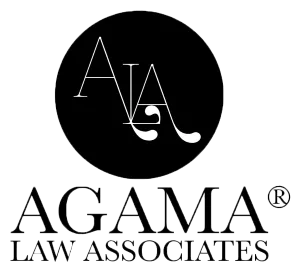This blog post is in continuation of Part I and Part II of CCPA Guidelines for Misleading Advertisements 2022. This part deals specifically with CCPA Guidelines with respect to advertisements targeted at children, along with a comparative analysis with regulations in other jurisdictions.
The CCPA Guidelines encompass preventive measures designed to protect children from misleading advertisements. In 2018, advertisers globally spent a staggering 4.2 billion U.S. dollars worldwide on advertising directed at children. It was projected that this spending would escalate to 4.6 billion U.S. dollars by 2021, with about 1.7 billion stemming from digital advertising formats.1 Advertisers intentionally target children because they are the easiest group to influence, making them a prime target audience2 capable of influencing a child's behavioural pattern. Excessive exposure to media without appropriate supervision is concerning, highlighting the need of the Guidelines.
Until recently, India's only advertising regulation was the Advertising Standards Code of India (ASCI). In 2022, Section 8 of CCPA Guidelines, issued by ASCI3, specifically addresses advertisements directed at children. This section aligns with ASCI Code's Section 3.24, emphasizing the importance of responsible advertising practices.
Children targeted advertisements under the CCPA Guidelines
Section 8 of the CCPA Guidelines specify the following -
- Unsafe Behaviour: Advertisements targeting children must not encourage dangerous behaviour and they should not lead kids to imitate harmful actions.
- Exaggeration of products: Advertisers must not take advantage of children's lack of experience, trust, or loyalty. They should not exaggerate product features to create unrealistic expectations.
- Physical and Mental Wellbeing: Advertisements should not promote practices detrimental to children's health or mental wellbeing. They should not imply that not using a product will make children unpopular or inferior.
- Costs: Advertisers should avoid using phrases to downplay costs falsely.
- Content: Children should not be featured in ads for prohibited products like tobacco or alcohol. Ads should not use sports, music, or cinema personalities for products that require health warnings or are inappropriate for children.
- Realism: Advertisements should accurately represent product characteristics and avoid exaggerating a child's capabilities with the product.
- Health Claims: Advertisements cannot claim product consumption enhances intelligence, physical ability, or provides exceptional recognition without valid proof. Health or nutritional claims must be substantiated scientifically.
- Negative Body Image: Ads targeting children should not promote negative body image, and they should not imply that products are superior to natural or traditional foods.
- Junk Food Restrictions: Junk food ads, like those for chips and carbonated beverages, should not be allowed during children's programs or on channels solely for kids.
- Promotional Gifts and Consumerism: Ads offering gifts to persuade unnecessary purchases or promoting illogical consumerism should be discouraged.
Comparison with laws of other jurisdictions
Laws in the United Kingdom
In the United Kingdom, the content of advertisements, sales promotions and direct marketing across all media, including marketing on websites, is subject to self-regulation by the Advertising Standards Authority (ASA)5. The laws in the UK incorporate most of the aspects of the CCPA Guidelines 2022. According to the ASA, whenever an advertisement is directed at or prominently features children, it must not contain anything that could potentially cause them physical, mental, or moral harm.
In contrast to the laws in India, the UK regulations also specify the parameters of harmful advertisements that depict children entering strange places, speaking to strangers, wandering unattended in public spaces or in hazardous situations, unless such depictions are essential for safety. Additionally, the UK regulations reinforce parental authority. Under Section 5.2.4, parental consent is mandated before purchasing expensive products, while Section 5.4.1 explicitly forbids advertisements undermining parental authority.
The Online Safety Bill is a proposed Act of the Parliament of the United Kingdom aimed at improving internet safety. The Bill's objective is to hold social media companies more accountable for user safety on their platforms, especially concerning children. The Bill is currently undergoing debates and is yet to be passed.
Laws in Australia
In 2007, the Australian Association for National Advertisers enacted a Code for Advertising to Children6. Being a separate code, it is well elaborated and similar to the CCPA Guidelines. The Code applies to all marketing and communications directed primarily to children aged 14 and under for goods or services that are targeted toward and have principal appeal to children. It expressly prohibits any kind of sexual content and the endorsement of discriminatory practices. It also mandates parental consent before collecting a child's personal information that could be used to identify them. The Code aims to ensure that advertising directed to children is not deceptive, exploitative, or misleading and that it does not encourage children to pester their parents to buy products.
Laws in Sweden
In Sweden, advertisements are mainly regulated under the Marketing Practices Act, 19707. However, there are also various rules for certain products, such as the Alcohol Act of 2010, which prohibits advertisements of alcohol targeted to individuals under the age of 258. The Television and Radio Act, 19969, strictly prohibits political advertisements aimed at children and imposes an absolute ban on commercial marketing aimed at children under the age of 12. Advertisements may not come immediately before or after a program or a portion of a program which is oriented primarily to children under 12 years of age. However, despite such stringent restrictions, these are not applicable to satellite media channels, ultimately rendering these regulations ineffective.
Laws in Denmark
In Denmark, advertising and marketing practices are regulated under the Marketing Practices Act, 199810. While there is no distinct law governing child-targeted advertising, there are provisions in the act that address practices directed at children and young people or where they are particularly vulnerable. Under Section 3(1) of the Marketing Practices Act, commercial practices directed at children and young people should be designed with specific reference to their natural credulity, lack of experience, and critical sense, as they are easily influenced and impressed. Section 11(1) of the Act states that commercial practices directed at individuals below the age of 18 must not incite them to violence or other dangerous behavior, or make unwarranted use of violence, fear, or superstition to influence them, either directly or indirectly. According to subsection 2 of Section 11, child-targeted advertising should not include images or references to intoxicants.
Laws in the United States of America
In the United States, there is currently no specific law governing advertisements targeting children, except for the Children's Online Privacy Protection Act (COPPA)11. The COPPA deals with advertising only in the context of any online service, including a website directed at children. However, in 2022, President Biden proposed to put an end to advertisements targeted to children12. Along with enacting a new act, he also emphasized updating the COPPA. Both acts have been postponed to January 2024.
Conclusion
The CCPA Guidelines 2022 represent a positive step toward preventing unfair advertising practices that target children. Because of increased media consumption and accessibility, children have become the primary targets of advertisers. While the CCPA Guidelines are a significant step in the right direction, they require more clarity for easier implementation.
Footnotes
1. J.G. Navarro, Kids advertising spending worldwide 2012-2021, available at https://www.statista.com/statistics/750865/kids-advertising-spending-worldwide/ [Last accessed on August 03rd, 2023]
2. Girard K., Kids' Privacy research on why we need to keep kids' data off limits, available at https://www.commonsense.org/education/articles/kids-are-exposed-to-targeted-advertising-across-the-industry [Last accessed on August 03rd, 2023]
3.Guidelines for Prevention of Misleading Advertisements and Endorsements for Misleading Advertisements, 2022, available at https://consumeraffairs.nic.in/sites/default/files/file-uploads/latestnews/CCPA%20Notification.pdf [Last accessed on August 03rd, 2023]
4. The Advertising Standards Council of India. Available at Code-Book.pdf (ascionline.in) [Last accessed on August 03rd, 2023]
5. Advertising to children, House of Commons Library, Available at https://researchbriefings.files.parliament.uk/documents/CBP-8198/CBP-8198.pdf [Last accessed on August 3rd, 2023]
6. AANA Code of advertising and marketing communications to children, Available at https://aana.com.au/content/uploads/2014/05/AANA-Code-For-Marketing-Advertising-Communications-To-Children-Explanatory-Note.pdf [Last accessed on August 3rd , 2023]
7. The Marketing Act, Swedish code of Statutes, Available at https://www.government.se/contentassets/747603b3d1a04351b1773524c7de3c84/2008486-marketing-act [Last accessed on August 3rd, 2023]
8. Alcohol and Drug Report, Nordic and Baltic Region, Available at https://www.nordicalcohol.org/sweden-commercial-communication [Last accessed on August 08th, 2023]
9. The Swedish Radio and Television Act, Available at https://www.mprt.se/globalassets/dokument/lagar-och-regler/the-swedish-radio-and-television-act.pdf [Last accessed on August 5th, 2023]
10. The Marketing Practices Act 1998, Available at https://wipolex-res.wipo.int/edocs/lexdocs/laws/en/dk/dk240en.pdf [Last accessed on August 5th, 2023]
11. Part 312, Children's online privacy protection rule, Available at https://www.ecfr.gov/current/title-16/chapter-I/subchapter-C/part-312 [Last accessed on August 5th, 2023]
12. The Swedish Alcohol Act 2010, Available at https://www.lexology.com/library/detail.aspx?g=b2a5d37c-bf5a-48db-9294-cdeb2775f512, [Last accessed on August 5th, 2023]
The content of this article is intended to provide a general guide to the subject matter. Specialist advice should be sought about your specific circumstances.

